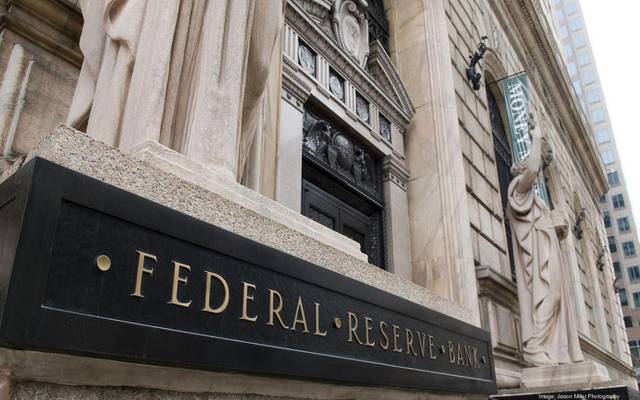Federal Reserve Maintains Interest Rates Amid Inflation Concerns
The Federal Reserve, in a widely anticipated move, has held interest rates steady, balancing the battle against persistent inflation with economic growth considerations.
Published May 02, 2024 - 00:05am

Image recovered from shorouknews.com
The Federal Reserve (the Central Bank) of the United States has kept its key interest rate unchanged for the sixth consecutive time, remaining at the highest level in over two decades, a move aligned with economists' expectations amid the recent surge in inflation rates. The federal funds rate will persist between 5.25% and 5.5%, a rate at which commercial banks can borrow from the Fed.
Since March 2022, the Central Bank has raised the interest rate by more than five percentage points at a record pace as an effort to combat inflation in the country's economy. Though the progression of interest rate hikes has paused recently, inflation rates in the United States have unexpectedly accelerated again.
According to the U.S Department of Labor, consumer prices in March increased by 3.5% compared to the same month last year, exceeding analyst's average expectations of a 3.4% rise. Comparatively, the inflation rate in February was 3.2%, highlighting the persisting challenge for the Federal Reserve's long-term inflation target of 2%.
High interest rates tend to slow down consumption, investment, and employment due to the increased cost of borrowing, thus undermining economic growth. U.S. GDP growth slowed in the first quarter of the year to 1.6% from 3.4% in the last quarter of the previous year, falling short of expectations.
The market now anticipates Federal Reserve Chair Jerome Powell's commentary following the interest rate decision, particularly in regards to whether there'll be a shift in the messaging about the Fed's resolve to reduce interest rates later in the year. Current stances suggest that the Federal Reserve deems the current interest rate levels sufficiently high to significantly curb economic growth. The Fed declared it does not anticipate a reduction in the interest rate range until there is greater certainty that inflation is sustainably trending towards the targeted 2% rate.
GDP growth has been affected, and consumer sentiments have shown concern over persistent inflation and labor market conditions. Despite the challenging economic environment, Federal Reserve Chair Jerome Powell acknowledged that strict monetary policy has eased inflationary pressures.
Undoubtedly, the decisions and signals from the Federal Reserve have far-reaching implications on the economy as a whole, investors, and the everyday consumer, who continues to grapple with high prices, especially in essential sectors like housing and groceries.
The persistent economic pressures are prompting the Federal Reserve to maintain a delicate balance between curbing inflation and not tipping the economy into a recession. Inflation's stubbornness is largely attributed to factors including supply chain disruptions, labor shortages, and high energy prices, stemming from the ongoing geopolitical tensions and the aftermath of the pandemic. Efforts to untangle supply chain issues have seen progress, but the energy sector remains volatile, heavily influencing the costs of goods and services worldwide.
Moreover, the labor market remains exceptionally tight, with unemployment rates hovering near historic lows. This condition suggests a strong demand for workers, giving them leverage to bid up wages. These increased wages can filter through the economy, pushing up costs for businesses, and potentially adding to inflationary pressures. A robust labor market typically is a sign of a healthy economy, but in the unusual post-pandemic landscape, it may also complicate the Federal Reserve’s inflation-fighting mandate.
In the face of these complexities, the Federal Reserve's latest decision to stand pat on interest rates underscores its focus on long-term economic stability. Yet the decision places the Fed in a precarious position. If inflation does not cool as anticipated—or worse, continues to climb—the central bank may find itself having to enforce tougher measures, which could include resuming the pace of rate hikes to prevent the economy from overheating.
The stock market has shown mixed reactions to the Federal Reserve's announcement, with investors weighing the potential impact of continued high interest rates against the hope that stable rates will support economic growth. Bond yields and the value of the U.S. dollar also reflect the tension between inflation concerns and hopes for a stable path ahead. Market analysts suggest that the Fed’s current stance could lead to increased volatility in the financial markets as investors consider the possibility of a policy error if inflation persists at high levels.
Consumer behavior is another crucial factor in the equation, with high inflation eroding purchasing power and leading to shifts in spending patterns. The ability of consumers to absorb price increases without a significant cutback in spending will be a testament to the resilience of the U.S. economy. Yet, there is the risk that sustained inflation could lead to a pullback in consumption, which would then have knock-on effects on economic growth and employment.
As policy makers keep a close watch, eventual moves by the Federal Reserve will depend on incoming economic data. Key indicators such as the monthly employment reports, GDP figures, and the Personal Consumption Expenditures (PCE) price index—the Fed's preferred measure of inflation—will provide further insights regarding the state of the U.S. economy and the effectiveness of monetary policy in controlling inflation.
The Federal Reserve's strategies and policies will continue to evolve in response to new data, yet the fundamental goal remains: to navigate the U.S. economy towards a soft landing where inflation is tamed without causing a drastic downturn. All eyes remain on the Fed as they steer through these uncharted economic waters, with the hope that their measured approach will lead to economic stability and growth for businesses and consumers alike.


:quality(70)/cloudfront-eu-central-1.images.arcpublishing.com/irishtimes/SV5HVQWI7BV6H65746THQB7QAM.jpg)




